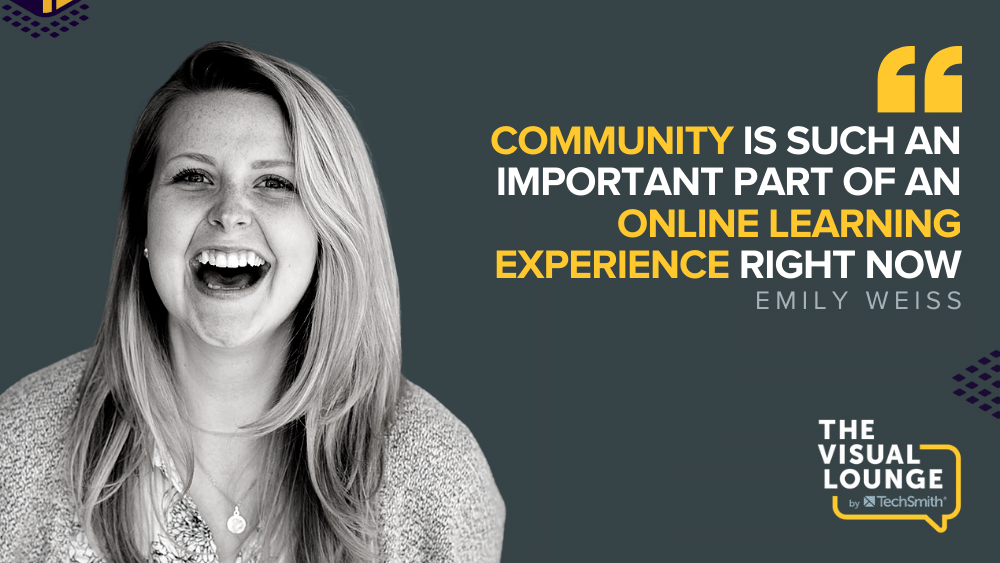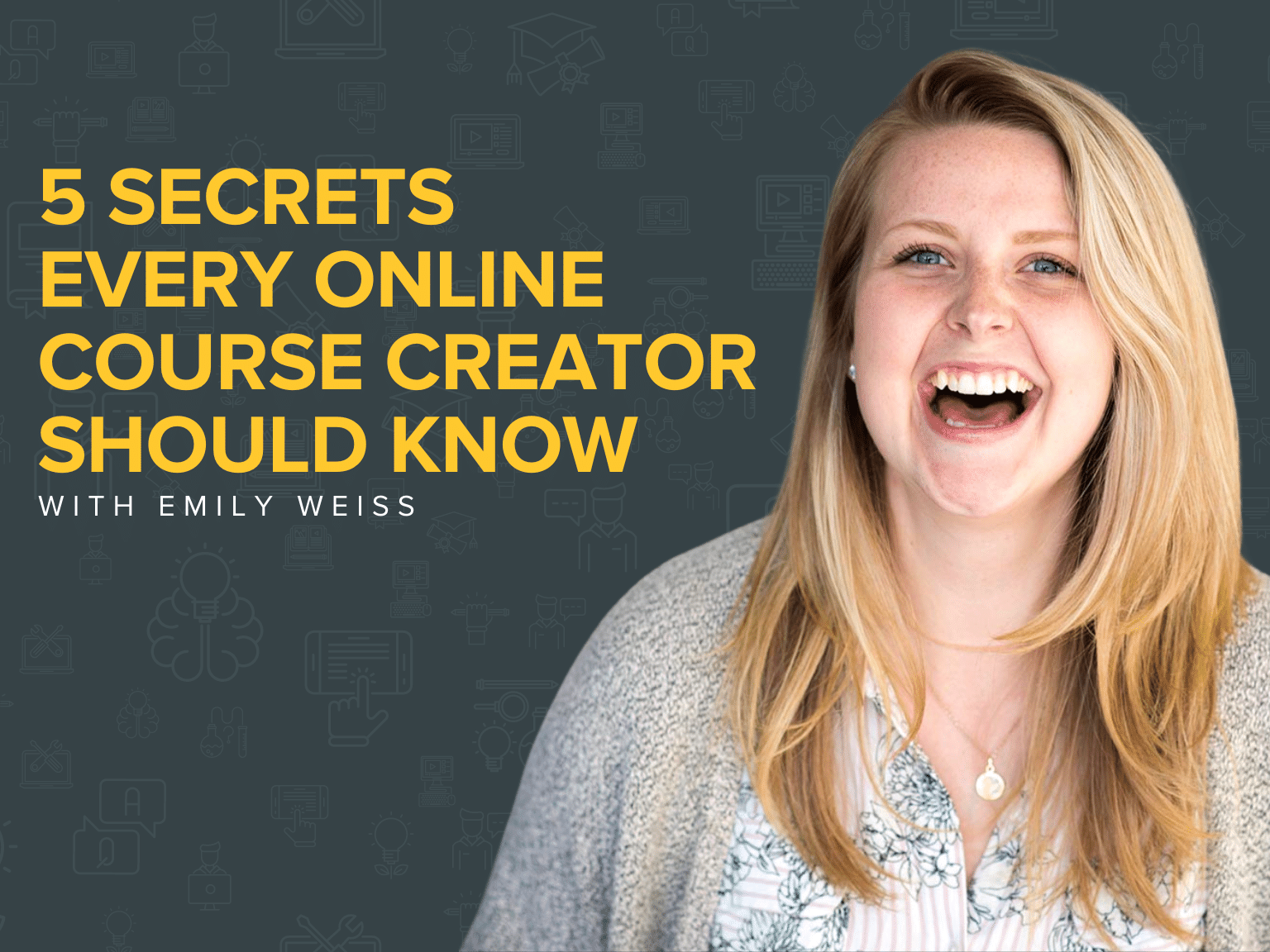How do you create a successful online course?
Online courses are an increasingly popular type of training. They can be a great tool to communicate clear messages to people and help them develop new skills.
What’s great about online courses is that they can be as broad or specific as you want. So, no matter what your training goal is, there’s the possibility to create a course.
But with so many online courses available, how can you design one that’s successful? Emily Weiss, Head of Partner Marketing at Thinkific, has helped hundreds of course creators find what works (or doesn’t work) for them. In this post, she shares her secrets for creating effective online courses.
Whether you’re a course creator looking to level-up your skills or have never created one before, these five secrets can help you design a more successful online course.
You can watch the video on this topic at the top of this post, to listen to the podcast episode, hit play below, or read on for more…
What makes an online course successful?
Emily states that people buy an online course to complete a “transformation journey” from their current state to their desired state. If you need to learn a new skill to get that promotion at work, for example, you might invest in an online course to improve your skills and reach that promotion.
But she also notes that we seek out the easiest route to achieve our desired state; we look for “the path of least resistance”. When online courses help people reach their goals in a simple way, they’re more effective. This results in great success for course creators, as happy students mean more referrals, more clients, and more revenue.
In her time at Thinkific, Emily has discovered five secrets that help define “the path of least resistance” for online courses.
Online course creation secret #1

If you’re creating a course, you first need to consider if there’s a demand for it. Online courses take a lot of time and effort, and if there’s no demand, it could be a waste of your time.
Emily’s first piece of advice is not to rely on your hunches, “take the time to prove market demand.”
One of the best ways to prove that there are people interested in your online course is to pre-sell it. Pre-selling generates buzz about your course before it exists. So, on launch day, plenty of people will be excited to start using it.
Pre-selling it also allows you to understand what your potential users want from your course and what problems they have that you can help solve.

Emily shared a story about one of Thinkific’s online course creators who proved market demand for her course by simply conducting a survey.
“She said, ‘I’m thinking of creating a course – what is your single biggest professional challenge?’ And she saw one overwhelming theme. She said, ‘Okay, that’s where I’m going to focus my online course’. So, she built a one-page overview of her course, put her learning outcomes in there, and then set a presale price.”
People then pre-purchased her course for $500 – this course now sells for over $2,000. By taking the time to prove market demand, the creator knew exactly where to invest her time and effort in order to create an online course that people wanted to buy.
Emily notes that proving market demand doesn’t necessarily mean getting thousands of people to pre-purchase your course. It can simply be understanding if your audience is interested enough to invest.
“The starting point is to talk to your audience and make sure that they’re actually interested in what you’re about to create.”
If you don’t already have an audience, first work out who your ideal audience would be. Then start visiting the communities or forums where they are. As you build and communicate with your audience, you can find out what problems they have that your course can solve.
Emily’s final pre-course creation tip is to do some competitor research. It shows high market demand when someone is already very successful, so work out what makes you different, and don’t let it put you off.
Online course creation secret #2

How do you decide what content to include in your course? Emily’s advice is to take a look at your best performing content first.
If lots of people are getting value from a blog, YouTube video, or podcast that you’ve created, this is a good indicator of what can work in your online course. You can also save a lot of time and effort using existing content to create your course.
Emily encourages course creators to repurpose by expanding on their content. For example, if your blog details a topic’s ‘what’, your course can reveal the ‘how’. She also suggests reformatting content, like transforming an e-book into a more engaging, interactive learning experience or revisiting a topic through a new lens.
“Maybe you’ve written a blog post about SEO, and now you want to teach an SEO course. You can repurpose your basic principles through a new lens. So maybe you were talking about SEO for bloggers in your blog post, but now you’re going to talk about SEO for small businesses. You can create a new course all around that, applying the same principles.”
Of course, you can create new content too. But by starting with content that you’ve already created, you can streamline and speed up the process.
Online course creation secret #3

We’re big believers that video = value. But how does video content specifically bring greater value to an online course?
Video is an essential learning tool. It’s many people’s preferred learning method and is often more engaging and entertaining than written content.
Emily advises to start with a welcome video. This should be a short, 2-3 minute video introducing yourself and the online course topic. Then create course content videos, Emily suggests “the shorter they are, the better”.
“You want to get your message across and sometimes you need shorter videos to do it, so that your student can actually absorb the information. Usually, seven minutes is the sweet spot.”
However, Emily points out that you should prioritize delivering your message effectively and succinctly rather than video length. If you can communicate your learning points in four minutes, then don’t stretch out your videos.
On the other hand, if your videos are running too long, don’t be afraid to split them into shorter pieces of content.
The biggest challenge that course creators face, according to Emily, is confidence. Getting in front of the camera is challenging for many, and if you don’t have access to high-quality equipment, you might doubt your ability to provide good video content. But Emily pushes back on this idea.
“You can definitely be scrappy, people will forgive you if your video is not perfect, especially right now when everyone is having to turn on video for the first time and learn how to do this. People are super patient and willing to forgive if the content is good.”
Online course creation secret #4

After the global pandemic drove people to use online courses, Emily noted that the biggest trend she saw was the need for community.
Having a community element in your learning environment means that learners feel more connected. Live video, forums, and chat functions can effectively establish relationships and this sense of community is often what keeps people coming back for more.

In fact, Emily states that the underlying theme to all of Thinkific’s most successful course creators is their dedication to forming communities. Examples include, Facebook groups, platform-specific community features, in-app discussions, and comments on lessons.
One way to encourage communities within your course is to construct time-bound launches where a group starts the course simultaneously. You could make a private group for those new starters so they can connect and share their thoughts.
Emily suggests that it’s possible to grow your community to a point that it becomes self-sustaining. This means less work for you but also a better community experience for your learners.
“Your community can get involved and answer the questions themselves, so that you as the host, or the leader don’t have to go in and answer every single question. […] The community and the learning experience aren’t separate, they become integrated.”
This leads into Emily’s final secret of successful online course creation: interaction.
Online course creation secret #5

Interactive experiences engage learners. Online training can be dry and hard to absorb for some learners, however by incorporating interactive material, it can make courses more enjoyable and therefore help leaners on their transformation journey.
Quizzes, surveys, assignments encourage students to reflect on their progress and reinforces their learning. Emily highlights that you shouldn’t always be telling your learners what they need to do. You also need to “give them the opportunity to execute.”
“We’ll see course graders actually say, ‘Don’t go watch the next video until you’ve written out your one-page marketing plan, or you’ve gone and put your film in your camera’, or whatever your action item is. It’s really important because that keeps your student engaged learning and moving forward and gives them the opportunity to apply what they’ve learned.”
With so many platforms developing new learning technologies, there are many different ways you can encourage students to interact. It could be with the content directly or with other learners in the community.
These interactions strengthen the learning experience and ultimately helps your learners complete their “transformation journey”. Emily believes that by using these five secrets you can create a “path of least resistance” for learners to achieve their goals and make your online course a success. At TechSmith, we’re passionate about helping you level-up your course creation skills. To get more helpful advice on planning, writing, and recording training content, visit the TechSmith Academy.
For more expert advice and tips visit TechSmith Academy on YouTube or listen to the Podcast.



Share